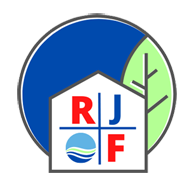WHAT’S IN THE AIR YOU BREATHE?
RJF will Test & Ensure your Home’s Indoor Air Quality
DID YOU KNOW WE SPEND ABOUT 90% OF OUR TIME INDOORS?*
Indoor Air Quality (IAQ) affects everyone, especially the most vulnerable – children, the elderly, and people with health conditions like asthma and heart disease.
The Environmental Protection Agency (EPA) states that indoor air quality is 5-20 times more polluted than outdoors.
“In the last several years, a growing body of scientific evidence has indicated that the air in our homes and office buildings can be more seriously polluted than the outdoor air.”
In today’s post-pandemic world, research indicates that people spend approximately 90 percent of their time indoors. This, for many people, increases their risk due to exposure to indoor air pollutants that can not be seen.
AIRBORN ALLERGENS CREATE HEALTH RISKS
These airborne allergens include mold & mildew particles, chemical gases, bacteria, or electromagnetic radiation (EMR) can all create health risks to you and your family. Indoor concentrations of some pollutants have increased in recent decades due to such factors as energy-efficient construction (when it lacks sufficient mechanical ventilation to ensure adequate air exchange) and increased use of synthetic building materials.
These air pollutants can introduce many different chemicals, including volatile organic compounds, directly into the indoor air. Home furnishings, paint, finishes on furniture, upholstery, mattresses, flooring including wood & carpet, pressed wood products off-gas into the air in your home.
Other sources include:
- Insulation
- Fuel-burning combustion appliances
- Tobacco products
- Household cleaning products
- Personal care products that are airborne
- Synthetic Candles you burn in your home
- Central heating and cooling systems and humidification devices
- Pesticides
- Excess moisture
- Elevated Carbon Dioxide levels
A major cause of “sick building syndrome” in our homes is due to inadequate ventilation. The lack of fresh air in your home can increase indoor pollutant levels. By not bringing in enough outdoor air into the home to dilute emissions from indoor sources, the air you breathe can be affected.
High temperature and humidity levels can also increase concentrations of some pollutants and cause mold, mildew, and other indoor air concerns.
The potential impact of indoor air quality on human health will affect the most susceptible family members who are either very young, older adults, or anyone with cardiovascular or respiratory disease.
The health effects that are associated with indoor air pollutants include:
- Irritation of the eyes, nose, and throat.
- Headaches, dizziness, and fatigue.
- Respiratory diseases, heart disease, and cancer.
RJF Home Air Testing will thoroughly inspect your home to make sure that your air is the cleanest and healthiest as possible.
Our inspections include air samples that will detect mold spores and potential particles that can cause health concerns. If there are visual signs of water damage, swabs can be collected and tested for pollutants.
Fresh air is vital to the air that you breathe & RJF Cares About The Air You Breathe!

